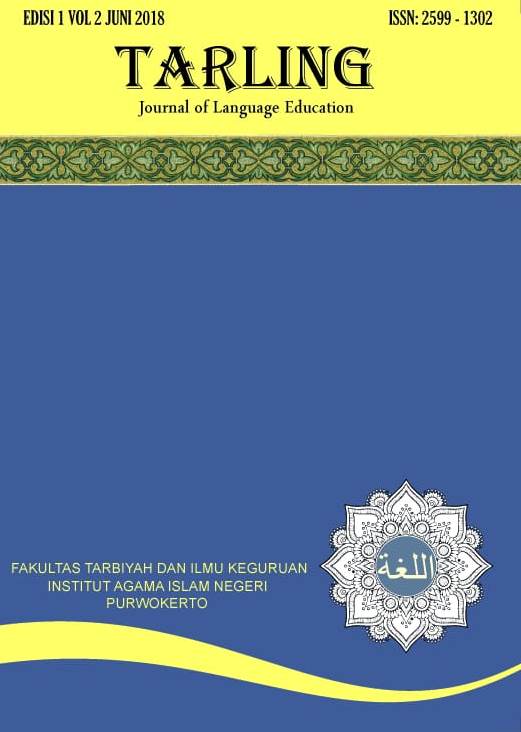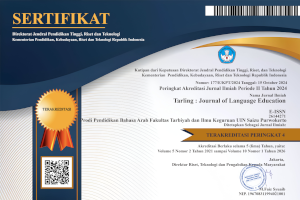PROSES MORFOLOGIS WAZAN-WAZAN FI’IL MAZID DAN MAKNANYA DALAM AL-QURAN JUZ 28
DOI:
https://doi.org/10.24090/tarling.v3i2.3532Kata Kunci:
Proses Morfologis, Wazan Fi’il Mazid, Al-Qur’an Juz 28Abstrak
Penelititan ini bertujuan untuk mendeskripsikan (1) wazan-wazan fi’il mazid yang terdapat dalam Al-Quran juz 28, (2) proses morfologis pada fi’il mazid dalam Al-Quran juz 28, (3) proses morfofonemik pada fi’il mazid dalam Al-Quran juz 28, (4) makna-makna yang terdapat pada fi’il mazid dalam Al-Quran juz 28. Jenis penelitian ini adalah deskriptif kualitatif. Sumber datanya adalah Al-Quran juz 28. Data yang diambil adalah kata-kata yang memiliki wazan fi’il mazid dalam Al-Quran juz 28. Hasil penelitian menunjukkan bahwa: (1) Ditemukan sebanyak 154 kata yang mengikuti wazan fi’il mazid dalam Al-Quran juz 28, (2) Kata-kata yang berwazan fi’il mazid dalam Al-Quran juz 28 mengalami dua proses morfologis dalam pembentukannya, yaitu proses afiksasi (penambahan afiks) dan modifikasi internal (perubahan harakat). (3) Proses morfofonemik pada fi’il mazid dalam Al-Quran juz 28 mengalami tiga macam proses, yaitu: (a) proses idgham (b) proses i’lal, dan (c) proses ibdal. (4) Berubahnya fi’il mujarrad menjadi fi’il mazid memberikan makna yang berbeda.Unduhan
Diterbitkan
2020-06-20
Terbitan
Bagian
Articles
Lisensi
Authors who publish with this journal agree to the following terms:
- Authors retain copyright and grant the journal right of first publication with the work simultaneously licensed under a Creative Commons Attribution License that allows others to share the work with an acknowledgement of the work's authorship and initial publication in this journal.
- Authors are able to enter into separate, additional contractual arrangements for the non-exclusive distribution of the journal's published version of the work (e.g., post it to an institutional repository or publish it in a book), with an acknowledgement of its initial publication in this journal.
- Authors are permitted and encouraged to post their work online (e.g., in institutional repositories or on their website) prior to and during the submission process, as it can lead to productive exchanges, as well as earlier and greater citation of published work (See The Effect of Open Access).










